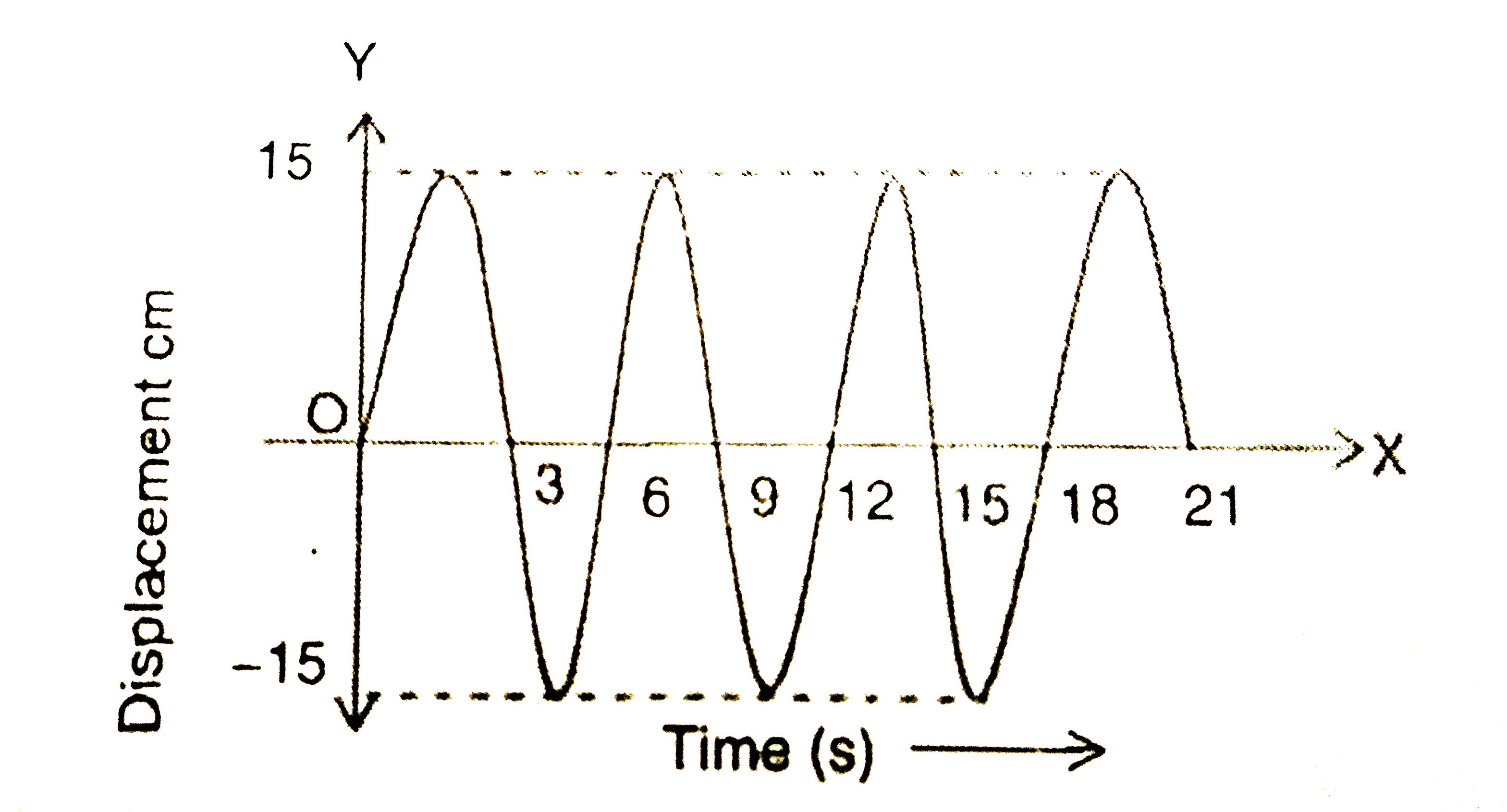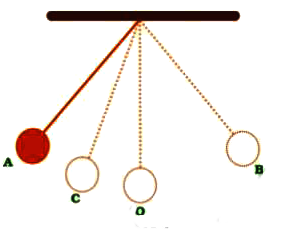Arrange the following steps of an experiment in a sequential order to determine the frequency of a simple pendulum.
(A) Start the stop watch when the bob reaches the extreme position and count the number of oscillations.(B) Suspend a simple pendulum from a cork fixed to a stand.
(C) Repeat the experiment and determine the time taken for 20 oscillations. (t2)
(D) Pull the bob of the simple pendulum from its initial position of rest and release.
(E) Stop the stop watch at the end of 20 oscillations and determine the time taken to complete 20 oscillations (t1).
(F) Determine the average of t1 and t2 as t.
(G) The time period of the oscillation is found using.
T=t20 and frequency using, f=1T.
ADBCEFG
AFEDBCG
BDAECFG
BDEFCAG
The correct Answer is:C
BDAECFG
Topper's Solved these Questions
- SOUNDBOOK - PEARSON IIT JEE FOUNDATIONCHAPTER - SOUNDEXERCISE - TEST YOUR CONCEPTS ( SHORT ANSWER TYPE QUESTIONS )
15 Videos
- SOUNDBOOK - PEARSON IIT JEE FOUNDATIONCHAPTER - SOUNDEXERCISE - TEST YOUR CONCEPTS ( ESSAY TYPE QUESTIONS )
13 Videos
- SOUNDBOOK - PEARSON IIT JEE FOUNDATIONCHAPTER - SOUNDEXERCISE - Test - 2
14 Videos
- OUR UNIVERSE BOOK - PEARSON IIT JEE FOUNDATIONCHAPTER - OUR UNIVERSE EXERCISE - ASSESSMENT TEST (TEST 2)
14 Videos
Similar Questions
Describe an experiment to show that sound travels through liquids.
View SolutionExplain how sound is produced in humans.
View SolutionAssertion (A) : Rama Raju loves listening to Carnatic music played on Mridangam whereas his daughter Neeta gets irritated by it.
Reason (R) : The sound that produces pleasant effect on our ears is called music and the sound that produces an unpleasant effect on our ears is called noise.
View SolutionArrange the following statements in correct sequence:
1. These vapours condense to form tiny droplets of water.
2. The water droplets come together to form large water droplets.
3. The heat of the sun causes evaporation of water from the surface of the earth, oceans, lakes, rivers and other water bodies.
4. The large water droplets become heavy and the air cannot hold them, therefore, they fall as rains.
5. Water vapour is also continuously added to the atmosphere through transpiration from the surface of the leaves of trees.
6. Warm air carrying clouds rises up.
7. Higher up in the atmosphere, the air is cool.
8. These droplets floating in the air along with the dust particles form clouds.
View SolutionIf the string of an oscillating simple pendulum is cut, when the bob is at the mean position, the bob falls along a parabolic path. The bob possesses horizontal velocity at the mean position.
View SolutionA simple pendulum has time period T. Charges are now fixed at the point of suspension of the pendulum and on the bob. If the pendulum continues to oscillate, its time period will now be
View SolutionThe time taken by a simple pendulum to complete 20 oscillations is given in the table as shown below study the and write the following steps in sequential order to determine the frequency of its oscillations. (A). Find the reciprocal of average time period (T). (B). Find the ratio of time and number of oscillations. (C). Find the average of the values obtained in the previous step.
View SolutionIn the case of a simple pendulum, a graph is drawn between the displacement and time taken for its oscillations as shown in the figure . Then
The amplitude of oscillation of the pendulum of the bob is ____ cm .
View SolutionThe bob of an oscillating simple pendulum arrives at one of the extreme positions 100 times in 200s. Then, the time period of the pendulum is ____
View SolutionWrite down the steps to verify the third law of simple pendulum in a proper sequence.
(a) Set the pendulum into ostillation and determine the time taken for 20 oscillations
(b) Determine the square of the time period (T2)
(c) Change the length of the simple pendulum and repeat the experiment
(d) Determine the time period of oscillation (T)
(e) Determine the length of the pendulum
(f) Note the value of V=λT in each case
View SolutionArrange the following steps of an experiment in a sequential order to determine the frequency of a simple pendulum. (A) Start the stop watch when the bob reaches the extreme position and count the number of oscillations.(B) Suspend a simple pendulum from a cork fixed to a stand. (C) Repeat the experiment and determine the time taken for 20 oscillations. (t_(2)) (D) Pull the bob of the simple pendulum from its initial position of rest and release. (E) Stop the stop watch at the end of 20 oscillations and determine the time taken to complete 20 oscillations (t_(1)) . (F) Determine the average of t_(1) and t_(2) as t. (G) The time period of the oscillation is found using. T = (t)/(20) and frequency using, f = 1/T .
View SolutionDerive an expression for time period of oscillating bob of simple pendulum .
View SolutionThe bob of a simple pendulum is positively charged. A negatively charged metal plate is placed just below the bob as the pendulum starts oscillating. How will it affect the time period of the pendulum?
View SolutionIf the string of an oscillating simple pendulum is cut, when the bob is at the mean position, the bob falls along a parabolic path. The bob possesses horizontal velocity at the mean position.
View SolutionThe bob of a simple pendulum of length /has a positive charge q on it. The pendulum is fixed to a horizontally oriented positively charged sheet as shown in the figure. The time period of the small oscillations of simple pendulum is
View Solutionshows an oscillating pendulum.

Time taken by the bob to move from A to C is t1 and from C to O is t2. The time period of this simple pendulum is
View Solution
